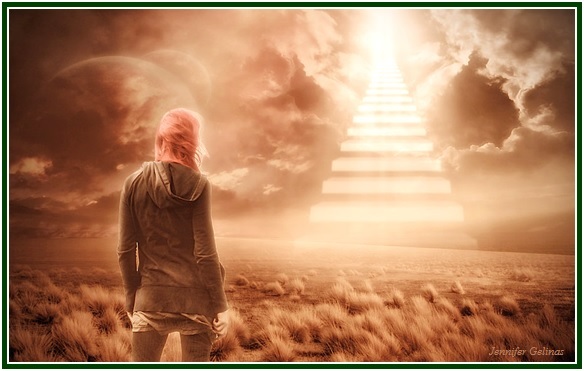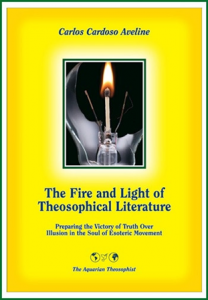
How a Transcendent View of
Life Helps Students Learn Theosophy
John Garrigues

00000000000000000000000000000000000
Editorial Note:
The following text was first published by
“Theosophy” magazine, at Los Angeles, in
the edition of March 1928, pp. 211-213,
with no indication as to the name of the
author. An analysis of its contents and style
indicates it was written by John Garrigues.
Original title: “Stumbling Stones”.
(CCA)
00000000000000000000000000000000000000000
“Fear, O Disciple, kills the will and stays all action.
If lacking in the Shila virtue – the pilgrim trips, and
karmic pebbles bruise his feet along the rocky path.”
(“The Voice of the Silence”, H.P. Blavatsky)
The true student of Theosophy is the one who has at last come to see that there is a path of action to be followed, and has resolved to follow it.
Every one forms more less frequently what we commonly call good resolutions. He determines to do this, or to abstain from that thing – usually the latter. At once all his old habits, tendencies and desires, known and unknown, seem to rise up in opposition. This is not so, but it seems so. What really occurs is that he has adopted an attitude at variance with the nature he has hitherto acquired, and the old nature has to be torn down. This is not easy, and as a rule the aspirant soon gives up the struggle, for he does not understand his own nature, and has no sure basis from which to carry on this inner warfare.
But the resolution of the student is a different thing. It is really the taking of a vow – the vow of allegiance to his higher nature, which he has recognized as having a real and immortal existence. It is the summoning of the Will. Not that which we are accustomed to call will, but the Spiritual Will. This is the force of the Higher Self, the One Consciousness which he recognizes as being the true Self in all beings, and of which he is determined to make himself a conscious channel.
This resolution at once calls for Charity, Caution and Patience. Charity, because he sees and knows that all beings are the Self, whether conscious of it or not, and therefore all alike are engaged in learning the lessons of life, and, like himself, making many mistakes and needing help. Caution, because he sees that to interfere forcibly with the action of consciousness of another is not to help, but to hinder; and that he has supreme rights only over his own conduct. Patience, because although he sees the path to be followed, he very soon learns that to follow it, requires no less than the complete reconstruction of that acquired nature which he has been for countless ages evolving.
Body, and mind, and heart and brain – all that he has acquired and has been accustomed to think of as his very self – all this has to be made over into a mere instrument and tool for his actions.
To realize this perception throughout one’s whole nature involves far more than would appear even after considerable reflection. It calls for the complete abnegation of any shadow of self-identification with every form of action whatever, and its replacement with a complete and unwavering self-identification with the whole of consciousness, irrespective of the form, one’s own or another’s. It is the giving up of the sense of possession in any form, through replacing it with the sense of the Self in every form.
Having come so far, the next step involves the perception that the actual change, therefore, is in the attitude to be sustained toward Life in all its ramifications. One’s relations with his own body, his own desires, his own mind, his own environment, physical, metaphysical and spiritual, differs only in degree but not in kind with his relations with other bodies, minds and circumstances. All alike are the forms used by the Self which is in all others the same as in himself.
The virtues of others are his virtues in so far as he feels them concordant with the true nature of Being. The vices of others are his teachers in so far as he perceives them to be discordant with the true nature of Being. His own virtues he perceives to be but vices when considered as possessions giving rise to a sense of superiority and immunity from weakness. His own vices become steps in the ladder as he perceives them to be hindrances and defects limiting and preventing his service to others.
Our faults, habits, qualities, and subdued desires, are not changed, whether good, bad or indifferent, by inaction. The Path is always the path of action. But when it is seen that it is the attitude of the Soul toward the environment that is the cause and the sustainer of the environment, whatever it may be, and the true attitude is seen, the whole of the struggle is thenceforth to maintain that true attitude in any and all circumstances. Actions of every kind then become exercises in the sense in which Patanjali uses that term.
The soul is always at the center of the environment and hence the work of the Soul is always an expression – that is, action from within outwards. This action is always one of creation, preservation and destruction, i.e., re-creation; and these do not go on separately; they go on together. The perception of the true attitude to be maintained, is the Soul’s act of creation here in the mind and body we presently occupy; the struggle to maintain that attitude unchanged in the midst of mental and bodily changes, in the Soul’s act of preservation; the gradual reformation of the whole nature to concordance with the attitude assumed, is the Soul’s act of “destruction” by the regeneration which makes that nature an instrument and not a being.
We are always “becoming,” because we are constantly creating and preserving and destroying – “becoming” better or worse. But the path of the neophyte is another kind of becoming than either of these. It is the gradual act of separation of the Soul from the body – meaning by body, the whole of that nature with which he has hitherto identified himself – through gradual identification with the Self in all nature. Nature does not cease thereby. It is the identification which ceases. The Soul is then emancipated and all Nature becomes its instrument.
Emancipation of the Soul is the effect of causes set up, precisely as the servitude of the Soul is the effect of causes set up. The Soul in ignorance creates a false environment and is enmeshed through identifying itself with its creations. The Soul at last recognizes itself as the Creator and sets about detaching itself from its creations. This is accomplished through identification with the Self. In the process the environment is changed and the Soul then lives in Spirit and not in Matter.
000
Date of publication online, March 2012.
000
On the role of the esoteric movement in the ethical awakening of mankind during the 21st century, see the book “The Fire and Light of Theosophical Literature”, by Carlos Cardoso Aveline.

Published in 2013 by The Aquarian Theosophist, the volume has 255 pages and can be obtained through Amazon Books.
000